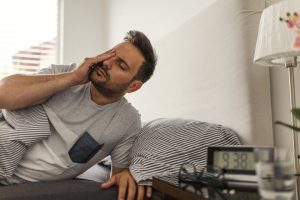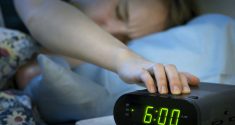Sleep experts advise against using the snooze button after the alarm clock rings. However, a study led by researchers at Mass General Brigham shows that this practice is widespread: more than 50% of recorded sleep phases end with a snooze alarm, and people spend an average of 11 minutes snoozing. Using data from the sleep analysis app Sleep Cycle, researchers analyzed the sleep data of more than 21,000 people worldwide. In almost 56% of the 3 million nights studied, the snooze button was pressed. Around 45% of study participants pressed the snooze button on more than 80% of mornings. These intensive users slept an average of 20 minutes longer per day. The results were published in Scientific Reports.
Snooze Function Interrupts Important Sleep Phases
“Many of us press the snooze button in the morning in the hope of getting a little more sleep, but this widespread phenomenon has received little attention in sleep research to date. In a global sample, we found that more than half of all sleep phases ended with a snooze alarm, and users spent an average of 11 minutes between snooze alarms each morning before waking up,” said lead author Rebecca Robbins, PhD, of the Division of Sleep and Circadian Disorders at Brigham and Women’s Hospital, a founding member of the Mass General Brigham Health System. Dependence on snoozing varied depending on the day of the week, with snooze alarms used more frequently on typical workdays (Monday through Friday) and least frequently on Saturday and Sunday mornings. Snooze alarm use was lower among individuals who slept five hours or less.
According to the researchers, this could be because short sleepers shorten their sleep due to their work commitments, as they have to get up and start their day, leaving little time for snoozing. People who used the snooze function frequently (i.e., on more than 80% of the mornings studied) spent an average of 20 minutes between snooze cycles. People who used the snooze function frequently also had more irregular sleep habits than other user groups. The snooze function was used most frequently in the US, Sweden, and Germany, while it was used least frequently in Japan and Australia. “Unfortunately, the snooze alarm disrupts some of the most important phases of sleep,” Robbins said. The hours just before waking up are rich in REM sleep. Pressing the snooze button interrupts these important sleep phases and usually only results in light sleep between snooze alarms. According to experts, the best approach to optimizing sleep and performance the next day is to set the alarm as late as possible and then stick to getting up when the first alarm goes off.
Positive Effect of the Snooze Button
But not all researchers share this view, which may be good news for those who like to press the snooze button. Previous research has found that snoozing has no negative effects and may actually support the waking process when used regularly. Researchers at Stockholm University investigated how common snoozing is and what effects this behavior has on sleep, fatigue, mood, and cognitive abilities. They found no negative effects of snoozing on cortisol release, morning fatigue, mood, or sleep quality during the night.
Although the participants’ sleep was disturbed during the half hour they snoozed, most of them still got quite a lot of sleep – more than 20 minutes. This means that their total sleep duration was hardly affected. In addition, no one woke up from deep sleep under the snooze condition, and the snoozers performed slightly better on cognitive tests immediately after waking up. At the same time, there were no clear effects of snoozing on mood, sleepiness, or cortisol levels in saliva.







